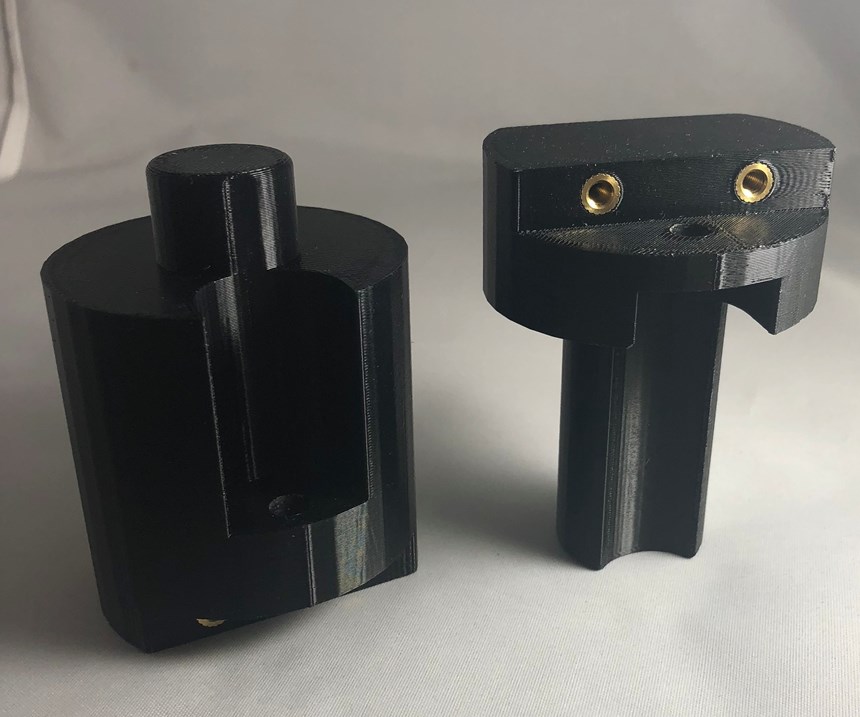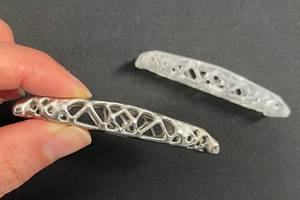Share
Read Next
We have covered the potential for additive manufacturing (AM) to change production processes and part designs. What about the business model?
This possibility—a different model for delivering parts, based on AM—is one that Production Services Management Inc. (PSMI) has seen. Adding 3D printing capability to existing installations by means of its newly created “Azoth” business unit will allow PSMI to give existing customers access to 3D printing essentially for free.
The idea shines a new light on the question of whether additive manufacturing is most effectively performed by current conventional manufacturers or by separate suppliers. Azoth is pointing the way toward a third option: a separate supplier resident within a conventional manufacturer.
Founded in 2005, PSMI is a company that operates and manages tool cribs and MRO supply cribs for manufacturing customers. Depending on the customer’s size, from one to 50 PSMI employees might work inside of a customer’s plant to provide manufacturing hardware such as tooling, spare parts and other supplies as needed. PSMI optimizes this part of the manufacturer’s operations by monitoring usage to both control inventory and seek the most cost-effective sources for needed components. Adding 3D printing elevates this model into something altogether different, by providing PSMI with the option to not just order a hardware component for a customer, but instead generate that part on-site right before the customer’s eyes.
Scott Burk is co-president of both PSMI and the new sister company Azoth. “Using 3D printing this way is going to let us add more value for our customers and become more valuable to them,” he says. “Right now, someone comes to one of our cribs wanting something, and we have to begin the ordering process.” 3D printing can in many cases offer a better way. It provides not only the potential to deliver the item more quickly, but also the chance to work with the customer on-site to optimize the design of what might be a specialty or custom component. The manufacturer’s entire sense of the role of a supply crib and what kind of service the crib can provide might change.
Ultimately, every PSMI crib could have access to 3D printing, says Burk, but only some cribs are large enough that they will justify having a 3D printer operating on site. Today, Azoth is testing the new model with a small number of customers doing business with PSMI at a scale large enough to justify one or two on-site machines.
The 3D printer Azoth has chosen comes from Rize. Burk says safety and simplicity are two of the factors that drove this choice. Several points make Rize’s 3D printers distinctive, including the following:
- Tandem process. Rize’s process for building polymer parts uses extrusion and material jetting in tandem. The result is a part with isotropic strength, meaning no change in strength along the direction of 3D-printed layer lines, so part performance is not affected by orientation during printing.
- Automatic support generation. Users make simple choices such as “solid” or “infill,” but otherwise leave the printer to automatically add supports to the model.
- Operator-assist features. A magnetic build plate ensures accurate and secure loading within the machine. Automatic checks for consumables ensure enough remaining material and ink to finish the job selected.
- Safe operation. Designed to be “office safe,” the Rize system emits no volatile organic compounds (VOCs). A special ink the printer uses between the part and support structures ensures supports can be easily removed by hand, meaning no sharp tools or hazardous solvents are required for this removal.
The safety of the machines is important because PSMI deals with so many different manufacturers. It therefore needed a printer that could easily win approval for installation within the sites of many different established large companies. Meanwhile, the printers’ simplicity is important for the scalability of the business model. PSMI will begin to adapt the training of its personnel to include additive manufacturing, but even so, a complicated printer would limit how widely it can spread this idea because of the mastery needed to run each machine.
Spreading the idea widely might prove important. Burk sees wide-open possibilities for this model of on-site additive service, though he admits some of the possibilities might yet be far off. For example, one test customer for the additive capability was already using 3D printing for its own prototyping before Azoth was created, but that company lacked sufficient capacity to meet its prototyping demand. Now, PSMI/Azoth will be given the chance to make prototypes, even though this is not a type of part typically ordered from the supply crib. And if prototype parts can be sourced in this way, why not short-run production?
“To some extent, we need to wait for additive manufacturing technology to catch up to realize all the possibility we envision,” Burk says. For example, he does not yet see any of existing metal 3D printing solutions providing the kind of safe and simple deployability the Rize machines offer for polymer parts. “But when we can do this kind of printing in metal, say in H13, then that will let us give customers a whole new range of options,” he says. Azoth could serve as an efficient AM production resource right inside the plant. To get ready for that day, PSMI needs to show its customers they can begin to think differently about the role a tool crib might play.Related Content
Possibilities From Electroplating 3D Printed Plastic Parts
Adding layers of nickel or copper to 3D printed polymer can impart desired properties such as electrical conductivity, EMI shielding, abrasion resistance and improved strength — approaching and even exceeding 3D printed metal, according to RePliForm.
Read MoreConcept Sneaker Boasts One-Piece 3D Printed TPU Construction
The Reebok x Botter Concept Sneaker Engineered by HP premiered at Paris Fashion Week, hinting at manufacturing possibilities for the future of footwear.
Read MoreQ&A With Align EVP: Why the Invisalign Manufacturer Acquired Cubicure, and the Future of Personalized Orthodontics
Align Technology produces nearly 1 million unique aligner parts per day. Its acquisition of technology supplier Cubicure in January supports demand for 3D printed tooling and direct printed orthodontic devices at mass scale.
Read More6 Trends in Additive Manufacturing Technology at IMTS 2024
3D printers are getting bigger, faster and smarter. But don’t overlook the other equipment that the AM workflow requires, nor the value of finding the right supplier.
Read MoreRead Next
Profilometry-Based Indentation Plastometry (PIP) as an Alternative to Standard Tensile Testing
UK-based Plastometrex offers a benchtop testing device utilizing PIP to quickly and easily analyze the yield strength, tensile strength and uniform elongation of samples and even printed parts. The solution is particularly useful for additive manufacturing.
Read MoreAlquist 3D Looks Toward a Carbon-Sequestering Future with 3D Printed Infrastructure
The Colorado startup aims to reduce the carbon footprint of new buildings, homes and city infrastructure with robotic 3D printing and a specialized geopolymer material.
Read MoreCrushable Lattices: The Lightweight Structures That Will Protect an Interplanetary Payload
NASA uses laser powder bed fusion plus chemical etching to create the lattice forms engineered to keep Mars rocks safe during a crash landing on Earth.
Read More
























